Pfister Hotel, About 1910
Pfister and Milwaukee Club buildings still survive. Both have famous designers.
Automobiles in downtown Milwaukee would not become common until the 1920s. Commuters would use the electric trollies and interurban trains instead. This postcard (circa 1910) does show some of the earlier automobiles. But these would be the toys of the wealthy, so it should not be a surprise that this view of Jefferson St. just a bit north of Wisconsin Ave. in the heart of Downtown shows so little traffic.
The building on the left is the Pfister Hotel. It was owned by Guido Pfister and his son Charles F. Pfister. Guido, a German immigrant, originally made a fortune through his tanning business, Guido Pfister Tanning Co., later renamed the Pfister and Vogel Leather Co. He envisioned the Pfister Hotel as a luxury hotel to serve the flourishing mid-19th century economic boom of Milwaukee, fellow thriving businessmen, travelers and and tourists. It was billed as “The Grand Hotel of the West,” constructed at a cost of over $1 million, and opened in 1893.
It was designed by architect Henry C. Koch in a Romanesque Revival style with many features uncommon in its time, like fireproofing, electricity, and thermostat controls. Koch is best known for his design of Milwaukee’s City Hall, and did many buildings for UW-Madison. He designed 26 courthouses and more than 120 schools during his career.
Koch was among many architects who vied to build the Milwaukee Club building across the street, but he and others lost out to Burnham & Root and its co-owner, Daniel Burnham, who designed it, while its construction was overseen by Edward Townsend Mix, who had also bid on the design. The building opened in 1883, two years after the club was founded as the first men’s club west of the Allegheny Mountains. Exactly 115 of the city’s leading citizens had subscribed to become members. They elected banker Alexander Mitchell as their first president and early members were a “who’s who” of local business leaders, including such names as Fitch, Layton, Plankinton, Allis, Uihlein, Bradley, James, Chapman, Fitzgerald, Van Dyke, Ilsley, Pfister, Wells, and Pabst.
Both buildings survive today, their exteriors remarkably untouched. This photograph was by J.M. Colby of Wausau who mostly shot photos in Marathon County and produced only a small number of Milwaukee views. Those he did produce were of high quality as this one titled “A rainy day near the Pfister” shows. The remaining buildings in this photo have long since disappeared as has the main entrance to the Pfister, the sturdy pillars having been replaced with a canopy suspended from the building. As the photo suggests, street parking was very easy to find in those days.
Jeff Beutner is a collector of photographs, postcards and stereoviews of old Milwaukee. This column features these images, with historical commentary by Beutner.
Pfister Hotel
Yesterday's Milwaukee
-
When Boston Store Was Big
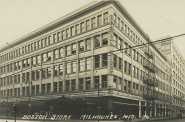 Apr 18th, 2018 by Jeff Beutner
Apr 18th, 2018 by Jeff Beutner
-
Sherman Park Has Been a Melting Pot
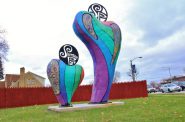 Aug 25th, 2017 by Jill Florence Lackey, PhD
Aug 25th, 2017 by Jill Florence Lackey, PhD
-
The Rise and Fall of Bronzeville
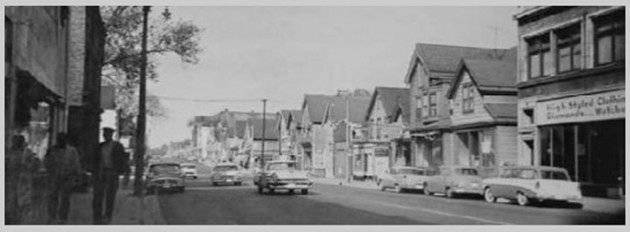 Aug 5th, 2017 by Jill Florence Lackey, PhD
Aug 5th, 2017 by Jill Florence Lackey, PhD

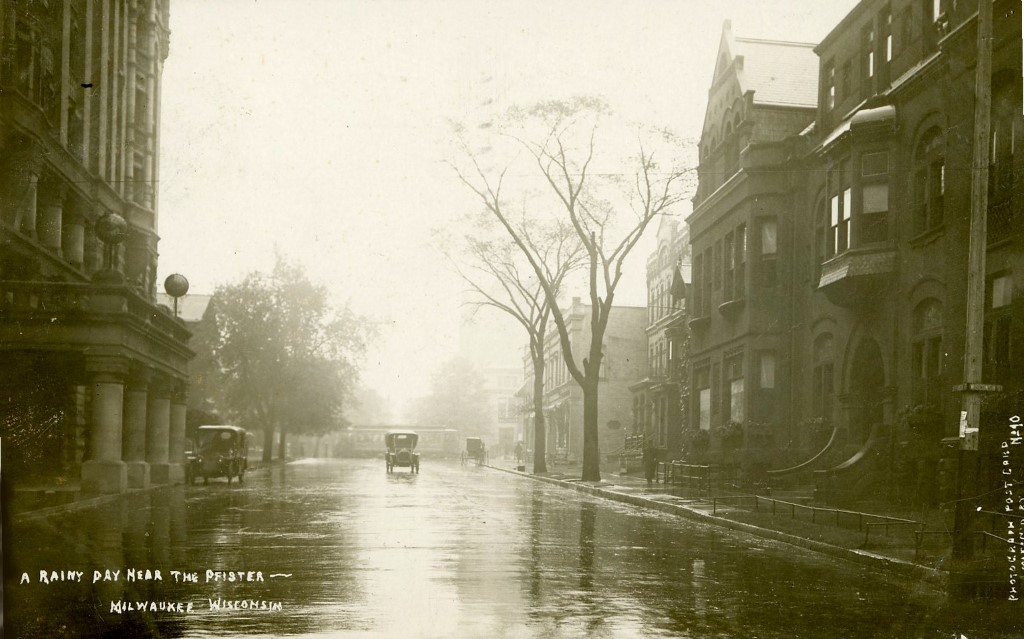
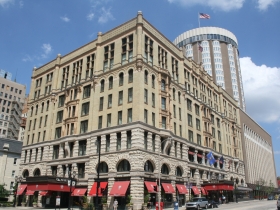
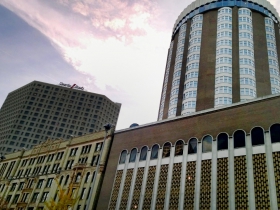
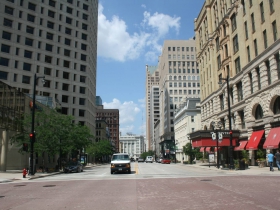
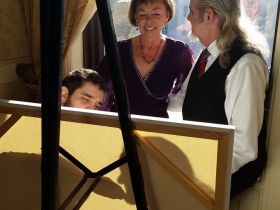
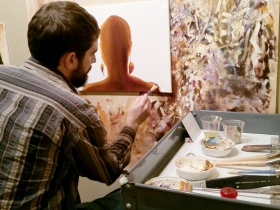
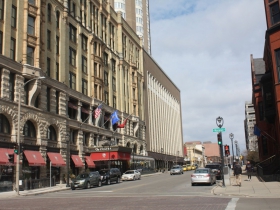




















Of all the images you’ve published here, this is the most evocative. Lovely! So easy to imagine yourself on the street a hundred years ago …
Here’s a Google Street View taken in 2011 of the same view: https://goo.gl/wAiJRh Thanks for posting this, Jeff!
Tom
Isn’t the building across the street still the same? The red brick building directly east of the entrance.
I second @exchilango’s vote. Wonderful image. @Sharon, the red brick building is the Milwaukee Club building described in the article.
Perhaps one quibble with the story, though. I have seen many images of the main lobby if the hotel with a vast skylight where the gilded vaulted ceiling is now. I don’t know if the change was made by Marcus, but it dramatically altered the character of the original building. One could also argue that the kitschy addition & tower also compromises the original.